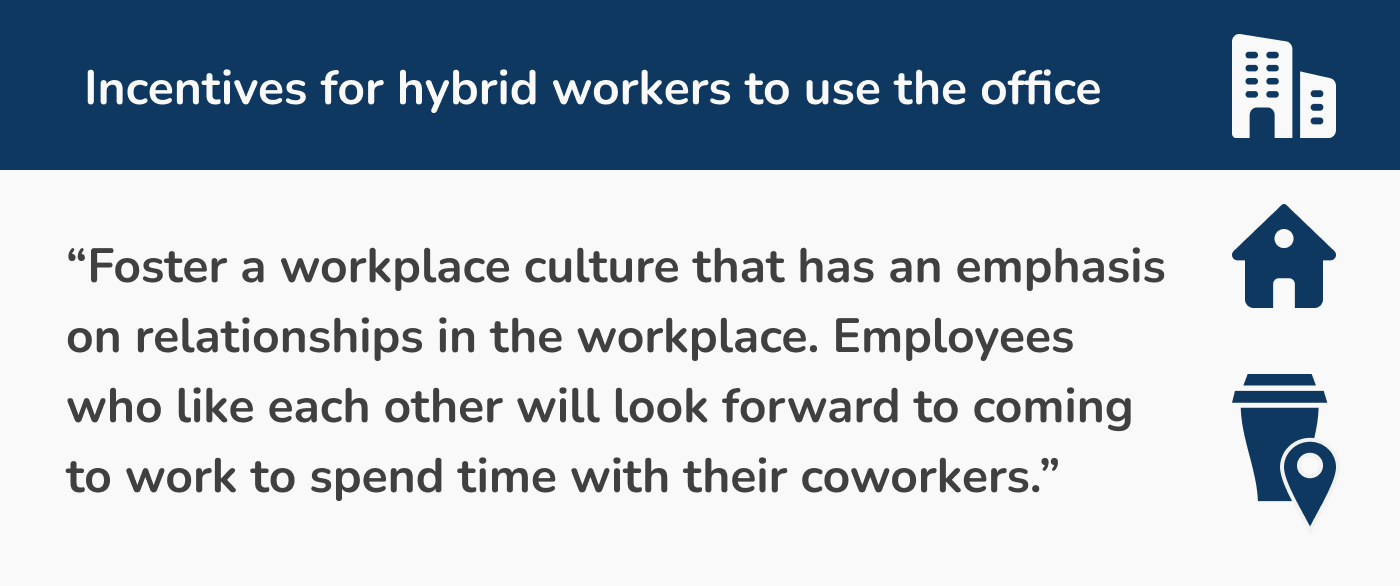Although the switch to remote work was an abrupt process, in our now post-pandemic world, there has been a gentler evolution towards the new future of work, hybrid workplaces.
There is no denying that hybrid work is the future, with numerous benefits for both employees and their employers but there are still challenges to overcome.
One of these challenges is attendance. Should employers be forcing workers to come into the office? Should employers be tracking people’s whereabouts? What about productivity, how should that be monitored?
Should Companies Be Tracking Employees?
After the freedom and autonomy experienced by employees during the pandemic, many individuals have found the return to structured schedules difficult to adjust to.
Some companies have become concerned about employees’ attendance at the office and a worrying trend is emerging. Companies have started implementing workplace surveillance and monitoring systems to keep track of employees.
These monitoring systems operate to various degrees of surveillance, with productivity tools that track your computer activity, to software that monitors all internal communication.
Kate works at a design and marketing agency, when she first started working remotely, she was required to install tracking software on her computer. Although she was initially told the software would just be tracking her hours, Kate actually found the software to be monitoring her browser tabs as well as taking random screenshots of her computer screen.
Kate, justly, feels this is a violation of her privacy and it has even caused her to feel anxious to watch a quick YouTube video during her lunch break.
This is an extreme example, the employee surveillance trend is rising and so are the levels of distrust among employees. There are strong feelings against being monitored with a recent survey revealing that up to 48% of individuals would happily take a pay cut if it meant their work wouldn’t be monitored
Companies Monitoring Attendance

As well as productivity tracking, there is also a focus on attendance monitoring. In April 2022, JP Morgan started requiring employees to swipe in and out of the office to ensure they were complying with their new hybrid work policy. Existing hybrid employees are now asked to attend the office at least three days per week, while other employees would be required to be in the office five days a week.
This new mandated policy was clearly in response to the slow uptake of employees returning to the office. After years of enjoying the flexibility afforded by remote working, there are many individuals who struggle with the idea of being forced back to the office on structured days.
The result of this attendance enforcement has been perceived as negative by parts of JP Morgan’s workforce. Employees are speaking up about the feelings of mistrust between management, while others are actively searching for new jobs.
If there is already a hybrid work policy in place, is there even a need to monitor attendance?
Yes. Just not for what you think.
Monitoring Attendance For Good
The intent behind monitoring attendance is what elevates the practice from distrustful to beneficial. Most employees of any company take issue with trying to force office attendance on employees via surveillance and monitoring. But when the purpose of attendance tracking is to help employees become more productive with their time, it can be really helpful.

One of the main challenges of the hybrid work model is the lack of intentional in-person collaboration. Although great leaps and bounds have been made with virtual communication and video calls, there is still no substitute for an in-person meeting to spark creativity and effectively problem-solve.
But, how can hybrid workers coordinate in-person meetings if no one knows where anyone else is on any given day?
This is where hybrid work scheduling platforms come in, alleviating the stress behind trying to manually keep track of when and where team members are going to be. If employees’ whereabouts are posted internally, then it’s a lot easier to schedule an in-person team meeting.
Coordinating in-person time between hybrid workers should be the principal reason behind attendance monitoring in a hybrid workplace.
Alternatives to tracking employees could be via alternative hybrid work schedules. It’s important to remember that there is no one-size-fits-all method when it comes to hybrid working.
Although smaller companies might work well with a flexible hybrid work schedule, where it is up to the individual what days they choose to come into the office. For this type of hybrid work policy, there will be more of a need for a hybrid work scheduling system to maximise intentional collaboration between individuals and reduce the effort in co-ordinating people together in the office.
They are also useful for strategising how best to structure a team’s workflow. If you know your hybrid team member tends to work the most at the end of the week, or is in the office during the mornings, then you can use this to your advantage. Projects can be planned around their attendance and you will also get a better idea of how long it will take to finish a project.
With larger companies, however, it might make more sense to implement a more structured hybrid work schedule so that it is known company-wide which days everyone will be in. This will make it far easier to plan meetings in advance with co-workers but comes at the cost of maintaining large enough office space for all to attend on the same day.
How To Boost Attendance Levels In Your Workplace
If you’re currently struggling with attendance levels within your company, there are steps you can take to boost attendance.
The first thing to do will be to sit down with your leadership team, and perhaps even the whole company and explain why you want to increase attendance in the office.
The lack of attendance might simply be because people don’t understand the importance of intentional collaboration. Once the benefits are explained to them and how important it is for in-person communication to take place, your workforce will be far more receptive to any new initiatives being introduced. And ensure that communication continues, over time people do respond when they see it has value for them in their role or the work they need to get done.
Once you’ve explained your reasoning, you will also need to see the argument from their point of view. Not everyone can come to the office on set days due to life circumstances. They might have a partner who works shifts and as a result, they have to juggle childcare around their inconsistent schedule. Other people might not be able to afford to come in as often as you’d like due to rising commuter costs.

It’s important to understand your employees’ situations so that you aren’t asking for unrealistic expectations.
Once you have all the information needed and you are also clear on what you want to achieve from employees coming into the office, then you can develop a strategy for getting them back in.
Providing Incentives To Come In
For companies like JP Morgan who have introduced a less flexible hybrid work schedule, they could encourage employees to come in via less invasive methods instead of monitoring employees.

Numerous studies have shown that individuals enjoy social interaction at work and have missed creating personal connections with coworkers while working remotely. Companies would do well to learn from the research and develop return-to-office strategies that don’t cause trust levels to plummet.
There has been a recent trend in creating workplace experiences as a strategy to get people back to the office. These include weekly breakfasts or lunches with managers, company-wide social events and in-person retreats.
The primary function is to foster a workplace culture that has an emphasis on relationships in the workplace. Employees who like each other will look forward to coming to work to spend time with their coworkers.
And if employees are keen to come to the office, then the need to invasively track attendance will melt away, and hybrid scheduling software can be used to easily coordinate with other hybrid team members.

Final Words
Whilst the surveillance of employees’ work is a damaging practice, there is a case for the visibility of employees' location plans to help solve the challenge of hybrid work attendance. What matters is the reasoning behind the monitoring and how the employer decides to go about it.
Maintaining honesty with your workforce is vital if you choose to implement a hybrid work scheduling system vs a surveillance or monitoring system, as is trusting your employees to get their work done without resorting to intrusive tracking software.







